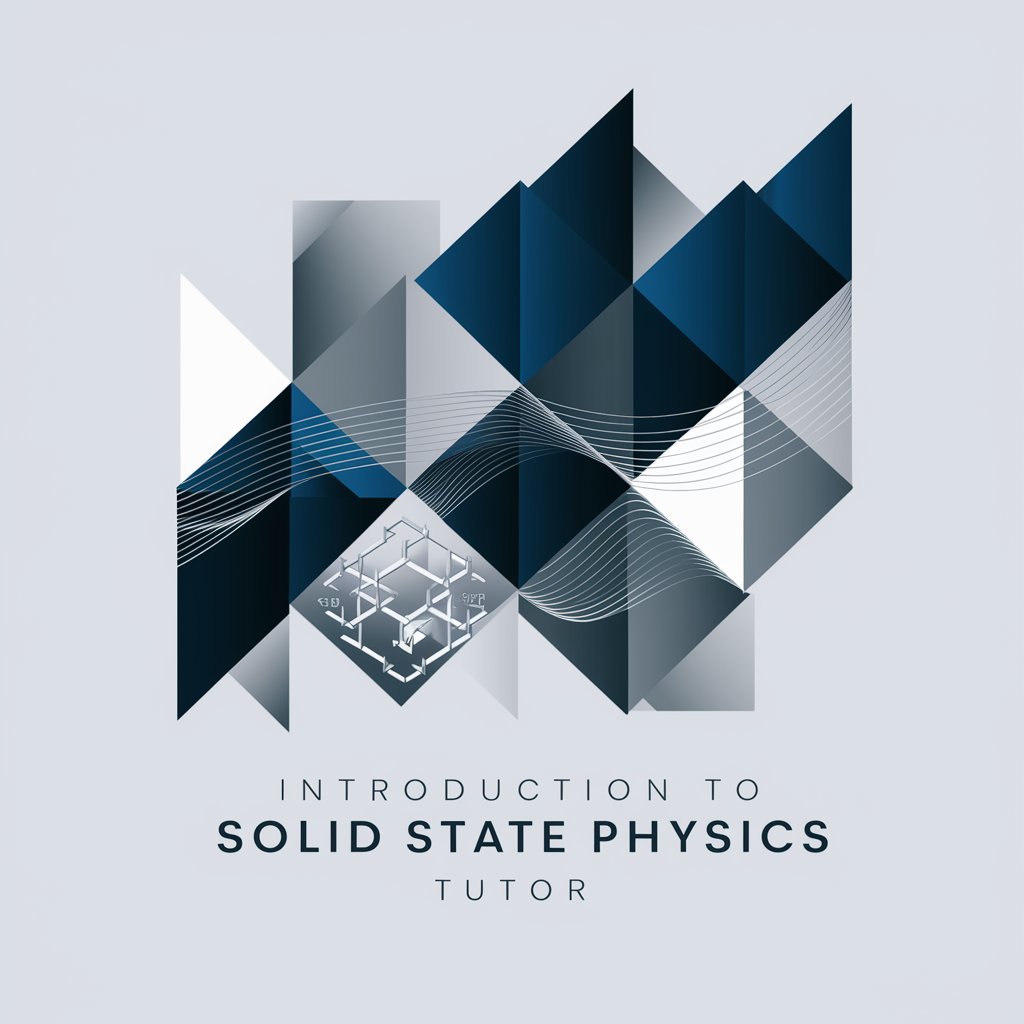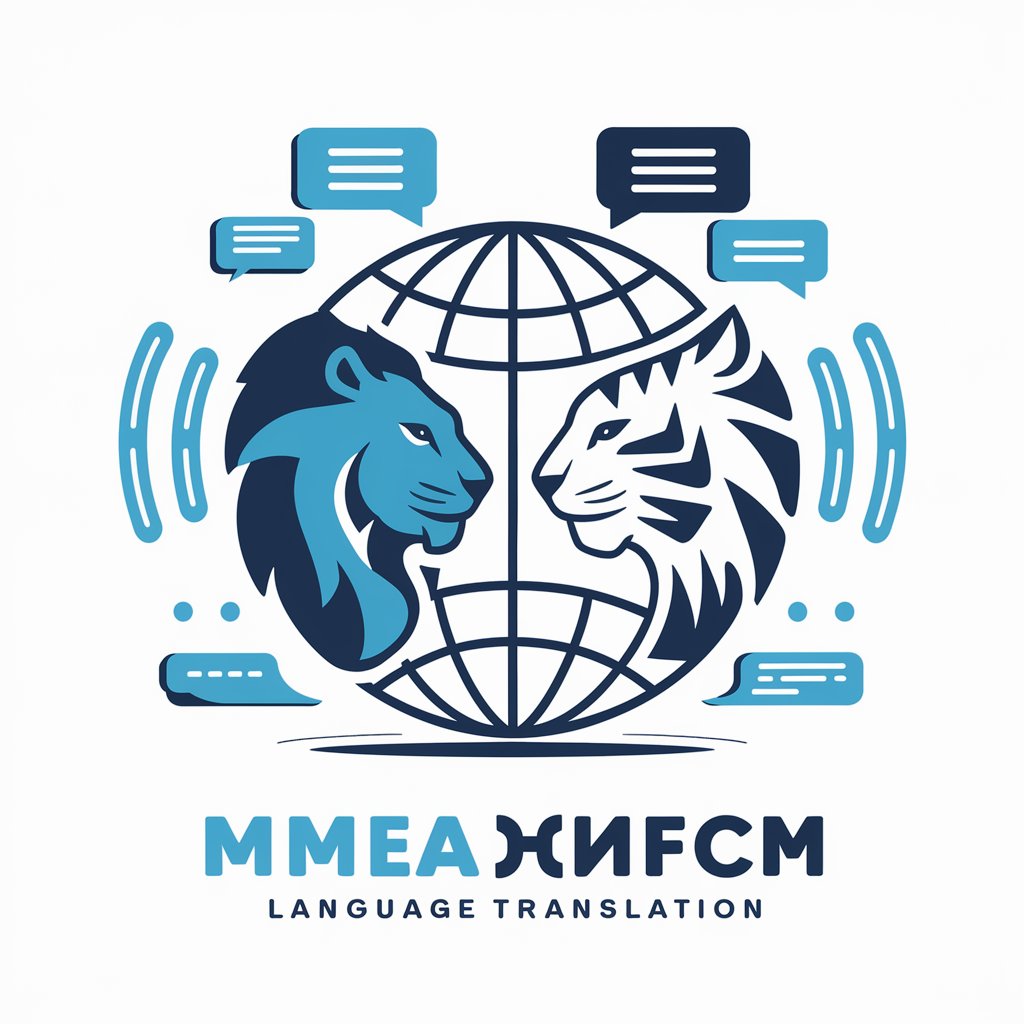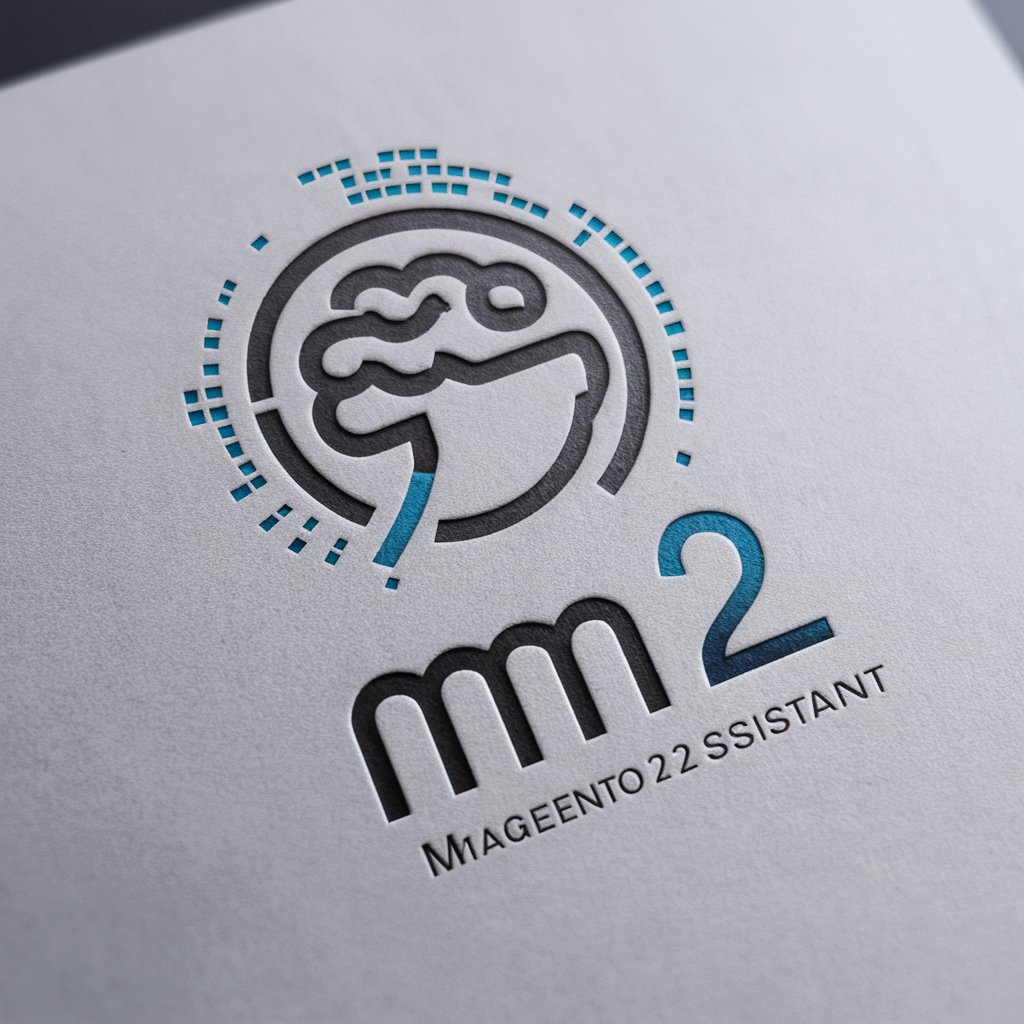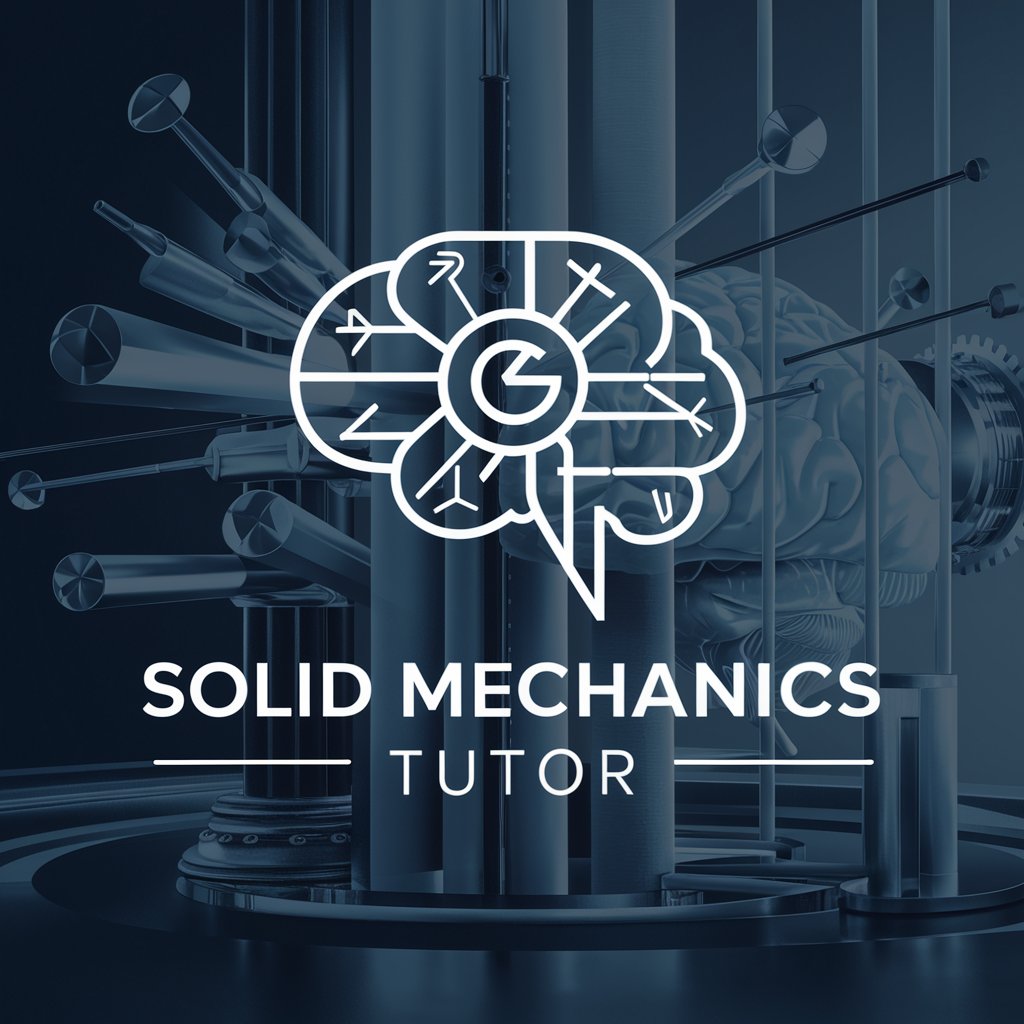
Introduction to Solid State Physics Tutor - Advanced Solid State Physics Guide

Welcome to the Introduction to Solid State Physics Tutor.
Unlocking Quantum Phenomena with AI
Explain the concept of lattice vibrations in solid state physics.
What are the main types of crystal lattices and their properties?
How do phonons contribute to the thermal properties of solids?
Describe the quantum theoretical approach to understanding magnetic properties in solids.
Get Embed Code
Introduction to Solid State Physics Tutor
The Introduction to Solid State Physics Tutor is a specialized AI designed to assist students in comprehending the intricate concepts of solid state physics. This includes topics such as lattice vibrations, elastic constants, and the thermal, electric, and magnetic properties of solids from a quantum theoretical viewpoint. It is equipped to offer explanations, solve problems, and provide examples that relate theoretical physics to practical scenarios. An example of its application is in explaining the quantization of lattice vibrations and how this relates to specific heat capacity in materials, using both the Einstein and Debye models for comparison. Powered by ChatGPT-4o。

Functions of Introduction to Solid State Physics Tutor
Explain complex physical phenomena
Example
Describing how band theory explains electrical conductivity in metals, semiconductors, and insulators.
Scenario
A student struggling to understand why metals conduct electricity but insulators do not can use this tutor to visualize and comprehend the electron band structure in different materials.
Solve numerical problems
Example
Calculating the Fermi energy for an electron in a solid or determining the lattice thermal conductivity using the phonon gas model.
Scenario
Graduate students conducting research on thermoelectric materials might use these calculations to estimate the efficiency of new materials under development.
Visualize concepts through diagrams and simulations
Example
Generating a Brillouin zone diagram for face-centered cubic (fcc) lattices or simulating the effect of magnetic fields on electron paths in solids.
Scenario
Students preparing for exams or researchers presenting conference papers can use these visualizations to aid in understanding and explaining the spatial arrangements and behaviors in crystalline structures.
Ideal Users of Introduction to Solid State Physics Tutor
Upper Division Undergraduate Students
These users typically encounter solid state physics in their advanced undergraduate courses and benefit from detailed explanations and problem-solving assistance to deepen their understanding of materials science and condensed matter physics.
Graduate Students and Researchers
This group benefits from complex problem-solving capabilities, detailed theoretical explanations, and advanced simulations to support their research in materials science, nanotechnology, and related fields.

How to Use Introduction to Solid State Physics Tutor
Initial Access
Visit yeschat.ai to start using Introduction to Solid State Physics Tutor for free without the need to log in or subscribe to ChatGPT Plus.
Identify Learning Objectives
Clearly define your learning goals such as understanding lattice vibrations, electronic band structure, or the thermal properties of solids.
Navigate Features
Explore the available modules like interactive problem-solving sessions, theory explanations, and practical examples to align with your study needs.
Engage with Content
Actively use the tutor to ask questions, review explanations, and test your understanding by attempting quizzes and practice problems.
Review and Reflect
Regularly review the feedback provided on your queries and performance, using it to refine your understanding and study approach.
Try other advanced and practical GPTs
Market Researcher
Harness AI for Strategic Market Insights

Zoe - Sassy Roommate
Your AI-Powered Sassy Sidekick

リアルな画像作成ツール
Turn Words into Visual Realities

영어동시통역
Bridging Languages with AI Power

Assistant Magento 2
Empowering Magento Development with AI

Data Engineering Pro
Streamline Data with AI Power

Solid Mechanics Tutor
AI-powered solutions for solid mechanics.

친절한 산티노가 쓴 슬랙챗
Polish Your Messages with AI

审稿编辑
AI-driven editor for flawless writing

E-commerce Image Genius
Power Your Sales with AI-Driven Descriptions

E-commerce Copywriter Expert
Craft Your Market Success

יועץ היועצים
Empowering Consultants with AI-Driven Insights

Frequently Asked Questions About Introduction to Solid State Physics Tutor
What topics in solid state physics can the tutor cover?
The tutor is equipped to handle a wide range of topics from basic crystal lattice theory to more advanced topics like quantum Hall effect, superconductivity, and the physics of semiconductors.
How does the tutor help with understanding complex theories?
It breaks down complex theories into manageable parts, offers step-by-step explanations, and provides diagrams and simulations where applicable to enhance comprehension.
Can the tutor assist with academic research in solid state physics?
Absolutely, it can provide guidance on the latest research, help formulate research questions, and suggest relevant methodologies and experiments.
Is there a way to track my progress with the tutor?
Yes, the tutor includes features to track your progress over time, showing you areas of strength and topics where you might need more study.
How interactive is the tutor in handling queries?
The tutor is highly interactive, providing immediate feedback on queries, customizing responses based on your level of knowledge, and adapting to your learning pace.